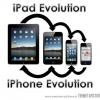iPad, iPhone, iPod touch, iTunes Error's

Παρακάτω θα δείτε μια μεγάλη λίστα με τα περισσότερα iTunes Error που μπορεί να συναντήσετε με κάποιες πιθανές λύσεις.Το κείμενο είναι αναδημοσίευση από το gsm4share.com και είναι στα Αγγλικά.Σας το δίνω παρακάτω αυτούσιο μιας είναι πολύ μεγάλο και η μετάφρασή του είναι αρκετά χρονοβόρα και πιθανόν να υπάρξουν αλλαγές στο νόημα των όσων γράφει το κείμενο.
Αν κάποιος επιθυμεί να το μεταφράσει ώστε να γίνει edit στην Ελληνική γλώσσα ας με ενημερώσει.
Symptoms
This article is the companion of the more general, Update and restore alert messages on iPhone, iPad, and iPod touch. Follow that article first. If, after following that article, the issue persists, continue with this article.
The alert message in iTunes may include one of the following numbers (or the message may include a number not listed here):
- 1, -1, 2, 4, 6, 9, 13, 14, 20, 21, 23, 26, 28, 29, 34, 35, 37, 40, -48, -50, 1000, 1002, 1004,
- 1011, 1013, 1014, 1015, 1479, 1600, 1601, 1602, 1603, 1604,
- 1611, 1631, 1638, 1639, 2001, 2009, 3002, 3004, 3013, 3014, 3015,
- 3194, 3200, 9006, 9807, -9808, 9844, 4026xxxxx.
Resolution
Specific error messages and resolutions
Collapse All Sections | Expand All Sections
Error 1 or -1
This may indicate a hardware issue with your device. Follow Troubleshooting security software issues, and restore your device on a different known-good computer. If the errors persist on another computer, the device may need service.
This device is not eligible for the requested build (Also sometimes displayed as an "error 3194")
- Update to the latest version of iTunes.
- Third-party security software or router security settings can also cause this issue. To resolve this, follow Troubleshooting security software issues.
- Downgrading to a previous version of iOS is not supported. If you have installed software to perform unauthorized modifications to your iOS device, that software may have redirected connections to the update server (gs.apple.com) within the Hosts file. Uninstall the unauthorized modification software from the computer.
- Edit out the "gs.apple.com" redirect from your hosts file, and then restart the computer for the host file changes to take affect. For steps to edit the Hosts file and allow iTunes to communicate with the update server, see iTunes: Troubleshooting iTunes Store on your computer, iPhone, iPad, or iPod—follow steps under the heading Blocked by configuration (Mac OS X / Windows) > Rebuild network information > The hosts file may also be blocking the iTunes Store. If you do not uninstall the unauthorized modification software prior to editing the hosts file, that software may automatically modify the hosts file again on restart.
- Avoid using an older or modified .ipsw file. Try moving the current .ipsw file (see Advanced Steps > Rename, move, or delete the iOS software file (.ipsw) below for file locations), or try restoring in a new user to ensure that iTunes downloads a new .ipsw.
This error occurs when the device unexpectedly loses its USB connection with iTunes. This can occur if the device is manually disconnected during the restore process. This issue can be resolved by performing USB troubleshooting, using a different USB dock-connector cable, trying another USB port, restoring on another computer, or by eliminating conflicts from third-party security software.
Error 20, 21, 23, 26, 28, 29, 34, 37
These errors typically occur when security software interferes with the restore and update process. Follow Troubleshooting security software issues to resolve this issue. In rare cases, these errors may be a hardware issue. If the errors persist on another computer, the device may need service.
Error 1604
This error is often related to USB timing. Try changing USB ports, using a different dock connector to USB cable, and other available USB troubleshooting steps (troubleshooting USB connections. If you are using a dock, bypass it and connect directly to the white Apple USB dock connector cable. If the issue persists on a known-good computer, the device may need service. If the issue is not resolved by USB isolation troubleshooting, and another computer is not available, try these steps to resolve the issue:
- Connect the device to iTunes, confirm that the device is in Recovery Mode. If it's not in Recovery Mode, put it into Recovery Mode.
- Restore and wait for the error.
- When prompted, click OK.
- Close and reopen iTunes while the device remains connected.
- The device should now be recognized in Recovery Mode again.
- Try to restore again.
Error 1600, 1601, 1602
Follow the steps listed above for Error 1604. This error may also be resolved by disabling, deactivating, or uninstalling third-party security, antivirus, and firewall software. See steps in this article for details on troubleshooting security software.
Error 1603
Follow the steps listed above for Error 1604. Also, discard the .ipsw file, open iTunes and attempt to download the update again. See the steps under Advanced Steps > Rename, move, or delete the iOS software file (.ipsw) below for file locations.If you do not want to remove the IPSW in the original user, try restoring in a new administrator user. If the issue remains, Eliminate third-party security software conflicts.
Error 1611
This error typically occur when security software interferes with the restore and update process. Follow Troubleshooting security software issues to resolve this issue. In rare cases, this error may be a hardware issue. If the errors persist on another computer, the device may need service.
Error 13, 14, 35 and 50 (or -50)
These errors are typically resolved by performing one or more of the steps listed below:
- Perform USB isolation troubleshooting, including trying a different USB port directly on the computer. See the advanced steps below for USB troubleshooting.
- Put a USB 2.0 hub between the device and the computer.
- Try a different USB 30-pin dock-connector cable.
- Eliminate third-party security software conflicts.
- There may be third-party software installed that modifies your default packet size in Windows by inserting one or more TcpWindowSize entries into your registry. Your default packet size being set incorrectly can cause this error. Contact the manufacturer of the software that installed the packet-size modification for assistance. Or, follow this article by Microsoft: How to reset Internet Protocol (TCP/IP) to reset the packet size back to the default for Windows.
- Connect your computer directly to your Internet source, bypassing any routers, hubs, or switches. You may need to restart your computer and modem to get online.
- Try to restore from another known-good computer and network.
If you experience this issue on a Mac, disconnect third-party devices, hubs, spare cables, displays, reset the SMC, and then try to restore. If you are using a Windows computer, remove all USB devices and spare cables other than your keyboard, mouse, and the device, restart the computer, and try to restore. If that does not resolve the issue, try the USB issue-resolution steps and articles listed for Error 1604 above. If the issue persists, it may be related to conflicting security software.
Restore loop (being prompted to restore again after a restore successfully completes)
Troubleshoot your USB connection. If the issue persists, out-of-date or incorrectly configured third-party security software may be causing this issue. Please follow Troubleshooting security software issues. .
There was a problem downloading the software for the iPhone (or another iOS device)
See the steps below for error codes 3000-3999.
iTunes cannot connect to the iPhone because an invalid response received from the device
This error occurs when there are problems communicating through USB. This may be resolved by following the steps for errors 13 or 14 above.
Unknown Error containing "0xE" when restoring
To resolve this issue, follow the steps in iPhone, iPad, iPod touch: Unknown error containing '0xE' when connecting. If you have a Windows computer with an Intel® 5 series/3400 series chipset, you may need updates for your chipset drivers. See iTunes for Windows: Issues syncing iOS devices with P55 and related Intel Chipsets for more information.
Hang during restore process
Following Troubleshooting security software will frequently resolve this issue. This issue can be caused by the default packet size being set incorrectly. There may be third-party software installed that modifies the default packet size in Windows by inserting a TcpWindowSize or MaxGlobalTcpWindowSize entry into the Registry. Contact the manufacturer of the software that installed the packet-size modification for assistance in adjusting this TcpWindowSize values. Typically the default packet size is modified by 3G cellular network card software, ISP communication software, or Internet speed download optimization software. There are legitimate reasons to change the TCP/IP packet size and not use the Windows default settings (for example, network traffic optimization, home/broadband optimization, enterprise app optimization such as database apps, Exchange, and more). Deleting the "TcpWindowSize" or "GlobalMaxTcpWindowSize" entries in Windows Registry could affect the system's performance with other apps or on their network connections. Deleting the customized TCP/IP settings may require the reinstallation of any third-party applications that had modified the TCP/IP settings from the Windows default settings. There are two ways to resolve this:
You can follow this article by Microsoft: How to reset Internet Protocol (TCP/IP) , or follow the steps below to manually find and remove TcpWindowSize and MaxGlobalTcpWindowSize entries from the Registry.
- For Windows XP, Windows Vista, Windows 7: Go to the C:\Windows folder and launch regedit.
- Go to Edit > Find.
- Search for "TcpWindowSize" entries. There are typically multiple entries of TcpWindowSize/GlobalMaxTcpWindowSize spread throughout the entire Registry. If "TcpWindowSize" exists, one or more third-party applications have changed the user's default Windows settings for TCP/IP.
- Go to File and select Export. This step will export a copy of the Registry that can be used as a backup of the original settings.
- Delete the "TcpWindowSize" entry.
- Search for the next "TcpWindowSize" entry and delete each one until the Registry no longer has any "TcpWindowSize" entries.
- Close Regedit, restart the PC, and test.
If editing the registry does not resolve the issue, restoring on a different computer that did not install the communication software is the step most likely to resolve this issue.
Additional error codes and resolutions
Unable to contact the iOS software update server gs.apple.com
Error 1004, 1013, 1638, 3194: These errors may be the result of the connection to gs.apple.com being redirected or blocked. Follow these steps to resolve these errors:
- Install the latest version of iTunes.
- Check security software. Ensure that communication to gs.apple.com is allowed. Follow this article for assistance with security software. iTunes for Windows: Troubleshooting security software issues.
- Check the hosts file. The restore will fail if there is an active entry to redirect gs.apple.com. Follow iTunes: Advanced iTunes Store troubleshooting to edit the hosts file or revert to a default hosts file. See section "Blocked by configuration: (Mac OS X/Windows) > Rebuild network information".
- Try to restore from another known-good computer and network.
- If the errors persist on another computer, the device may need service.
Error 1479: This error occurs when trying to contact Apple for an update or restore. Quit iTunes, disconnect from USB, restart the iOS device, reconnect the device to the computer, then launch iTunes and attempt to update or restore again.
Error 1639: See this article for resolution.
Errors 3000-3999 (3004, 3013, 3014, 3018, 3164, 3194, and so on): Error codes in the 3000 range generally mean that iTunes cannot contact the update server (gs.apple.com) on ports 80 or 443.
- Update to the latest version of iTunes.
- Verify the computer's date and time are accurate.
- Check that your security or firewall software is not interfering with ports 80 or 443, or with the server gs.apple.com.
- Follow Troubleshooting security software. Often, uninstalling third-party security software will resolve these errors.
- An entry in your hosts file may be redirecting requests to gs.apple.com (see "Unable to contact the iOS software update server gs.apple.com" above).
- Internet proxy settings can cause this issue. If you are using a proxy, try without using one.
- Test restoring while connected to a known-good network.
Error 3014: may indicate that you need to free up more disk space on the computer before trying to restore again.
Error 3194: You may not have the latest version of iTunes installed Update to the latest version of iTunes. If the issue persists, follow the steps above in "Unable to contact the iOS software update server gs.apple.com".
Error 3004: If you are using a Mac, you may be able to resolve an error 3004 by quitting iTunes and using the following command at the command line: dscacheutil -flushcache
The device could not be restored. An internal error occurred: This indicates a network-connectivity or traffic issue. If you see this error, wait an hour or more and try again.
Error 3200: This indicates a network-connectivity or traffic issue. If you see this error, wait an hour or more and try again.
Error 9807: Verify the computer's date and time.
If unresolved, open access to the following VeriSign servers:
- evintl-ocsp.verisign.com
- evsecure-ocsp.verisign.com
Error 9808 (or -9808): Follow the steps in iTunes Store: Unknown alert error message when connectingto resolve the issue. If those steps do not resolve the issue, or if the settings revert to their original values after the restart, then follow iTunes for Windows: Troubleshooting security software issues.
Error 9844: This is typically caused by incorrect firewall settings. See the section titled "Open the proper ports and allow access to Apple servers" in the Advanced Steps section below.
Errors related to third-party security software
Error 2, 4 (or -4), 6, 40, 1000, 9006
- Follow Troubleshooting security software. Often, uninstalling third-party security software will resolve these errors.
- There may be third-party software that modifies your default packet size in Windows by inserting a TcpWindowSize entry into your registry. Your default packet size being set incorrectly can cause these errors. Contact the manufacturer of the software that installed the packet size modification for assistance or follow this article by Microsoft: How to reset Internet Protocol (TCP/IP).
- Verify that access to ports 80 and 443 are allowed on your network.
- Verify that communication to albert.apple.com or photos.apple.com is not blocked by a firewall, or other Internet security setting.
- Discard the .ipsw file, open iTunes and attempt to download the update again. See the steps under Advanced Steps > Rename, move, or delete the iOS software file (.ipsw) below for file locations.
- Restore your device while connected to a different network.
- Restore using a different computer.
The required resource cannot be found: This alert message occurs when your device has a newer version of iOS than what is available in iTunes. When troubleshooting a device that presents this alert message, go to Settings > General > About and check the version of iOS on the device. If it is newer than the latest released iOS version, the device may have a prerelease developer version of iOS installed. Installing an older version of iOS over a newer version is not supported. Error 1015: This error is typically caused by attempts to downgrade the iPhone, iPad, or iPod touch's software. This can occur when you attempt to restore using an older .ipsw file. Downgrading to a previous version is not supported. To resolve this issue, attempt to restore with the latest iPhone, iPad, or iPod touch software available from Apple. This error can also occur when an unauthorized modification of the iOS has occurred and you are now trying to restore to an authorized, default state.
Possible hardware issues
Error -1002, 1011, 1012, 1014 These errors may indicate a hardware issue with your device. Follow the steps in this article. Also attempt to restore while connected with a known-good 30-pin Dock Connector cable, computer, and network to isolate this issue to the device. The MAC address being missing or the IMEI being the default value (00 499901 064000 0) can also confirm a hardware issue.
Error 48 (or -48): Quit iTunes, discard the .ipsw file, (see the steps under Advanced Steps > Rename, move, or delete the iOS software file (.ipsw) below for file locations), open iTunes and attempt to download the update again.
Error 20000-20008: This error may indicate that you have a USB communication failure due to a damaged USB 30-pin Dock Connector cable, out-of-date USB device drivers or firmware, or that other USB devices connected to your computer are interfering with iTunes communicating to the iOS device. Try restarting the PC and testing again with a different USB port. If you are using a custom Windows Theme Pack, revert to the default theme pack, restart, and try to restore.
Error 1631: Insert SIM card into device and try again.
Error 40265xxxx: Errors of the 40265xxxx range generally occur during the restore-from-a-backup phase, after iOS has been installed on the device. Restoring the device and setting up as new can resolve the issue. Before restoring as new, take steps to preserve the previous backups created by iTunes, such as copying the contents of the Backup directory onto the desktop. See iPhone and iPod touch: About backups to learn where backups are stored for your computer's operating system and additional precautionary notes regarding setting up as new. The backups created by iTunes store data such as your SMS, Favorites, Bookmarks, and other app data.
Error 0xE8000001
Device was suddenly unplugged. iTunes couldn't connect with the device. Try it again
Error 0xE8000022
Error in your firmware files. Restore.
Error 0xE8008001
IPA signature verification failed.
Error 0xE800003D
False permissions in the Carrier Bundle folder. Restore, update or fix the permissions from the carrier bundle to update the carrier settings via iTunes.
Error 0xE800006B
Device was suddenly unplugged. iTunes couldn't connect with the device. Try it again.
Error 0xE8000065
sn0wbreeze custom cirmware error on USB connection. Unplug the device, reboot it, and plug it in again.
Advanced steps
Follow these advanced steps only if the steps in TS1275 have not resolved the issue or if a specific update and restore error message recommends it. If the update or restore error message is not listed in above, try following all the steps in TS1275 and this article starting from the top down (basic to advanced steps) to resolve the issue.
Force restart your iOS device
Hold down the Home and Sleep/Wake button until the Apple appears and then release. Once the device has started up or displays a connect to iTunes screen, try to restore again.
Restore on a different computer
If the issue is not resolved with the above steps, try to restore using a different computer. Ensure that the computer you use has an active connection to the internet, the latest version of iTunes, other USB devices except the keyboard and mouse have been disconnected, and connect directly to a rear USB 2.0 port on the computer.
If another computer is not available, continue with the steps below.
Open the proper ports and allow access to Apple servers
During the update and restore process, iTunes needs to contact Apple. Ensure that your computer has the following ports open and can access these servers:
- Port 80
- Port 443
- phobos.apple.com, albert.apple.com, gs.apple.com, edgesuite.net, evintl-ocsp.verisign.com, evsecure-ocsp.verisign.com
To learn how to open your network to access these servers, refer to your router, firewall, or security software documentation. Follow the steps in Troubleshooting security software issues to identify, update, and configure third-party security software to resolve a restore error.
You may need to update, properly configure, disable, or uninstall built-in firewalls and other security software to prevent interference with iTunes. For assistance with this, contact the company that supports the firewall or security software you use. If you are using proxy settings, try to restore or update without using a proxy.
Use MSConfig to restart your PC using Selective Startup
On a PC, try to restore your iPhone, iPad, or iPod touch after restarting in Selective Startup mode. Do not use MSConfig to resolve restore issues caused by security software.For instructions on how to use MSConfig to restart your PC in Selective Startup with the appropriate Apple software enabled, see the following articles:
- Using MSConfig to troubleshoot conflicts in Windows XP
- Using MSConfig to troubleshoot conflicts in Windows Vista & Windows 7
OS virtualization or emulation software may cause restore errors. If you are using a Mac and have a virtual OS environment running, or are attempting to restore from iTunes running in a virtual OS, shut down the virtual OS, quit the virtualization software, and attempt to restore using the latest version of iTunes available for the Mac.
Restore using a new user account
Create a new user account on your computer and try to restore while logged in as the new user. iTunes will download a new version of the software restore file. After creating the new user, log in to that account, open iTunes, and attempt to restore to see whether the issue persists in this new user.
Use these steps if you're not sure how to create a new user:
Windows 7, Windows Vista, Windows XP
- From the Start menu, choose Control Panel.
- Open User Accounts.
- Select "Create a new account" and follow the instructions to complete the account setup process.
- Once the new account is created, choose Log Off from the Start menu.
- Log in to the newly created user account.
- From the Apple menu, choose System Preferences.
- Choose View > Accounts.
- Click the "+" (you may need to authenticate to be able to click this).
- Give the new user a name and short name and enter a password.
- Select the checkbox for "Allow user to administer this computer". This makes the user an administrator user.
- Click Create Account.
Τελευταία επεξεργασία από: thanasis, 05/02/2013 - 17:45
Ενημέρωση λίστας.


















